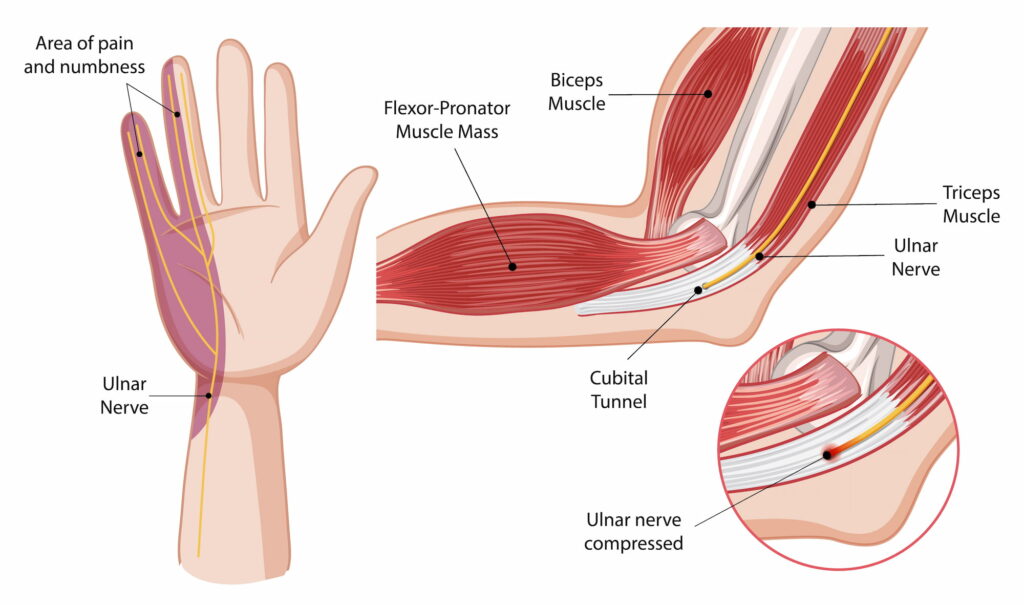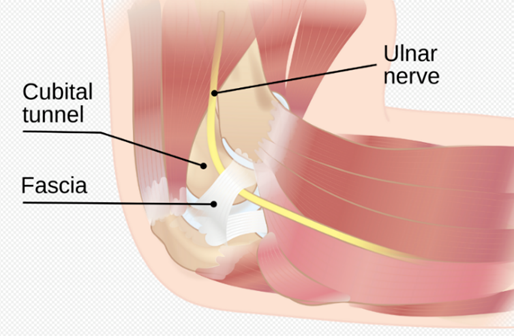Cubital tunnel release surgery aims to free the ulnar nerve, which runs along the inner side of your elbow, from the pressure causing your symptoms. Read about the condition via the link below, or read on for more information about surgery.
Indications for surgery
Cubital tunnel release surgery is recommended in cases of persistent symptoms of ulnar nerve compression that do not improve with non-surgical treatments. Common candidates for this surgery include:
- Those with failed non-operative treatments (when splinting, physical therapy or activity modifications haven’t worked)
- When there’s significant numbness, tingling, or weakness in the hand, particularly in the little and ring fingers
- If the condition progresses to permanent muscle loss or damage

What the surgery involves
During the procedure, Dr Lambers releases the tissue that traps and compresses the ulnar nerve:
- The tissue constricting the nerve is carefully cut, reducing the pressure at and around the elbow
- If necessary, the surgeon may move the ulnar nerve to a new position at the front of the elbow, where it experiences less tension (This is called ulnar nerve transposition)
- Once the nerve is freed, the incision is closed with sutures and a dressing is applied

What to expect after surgery
The procedure is usually done as day surgery, meaning no overnight hospital stay is required. You can use your arm right away, as the dressing is waterproof and while relief from nerve symptoms may begin immediately, full recovery often takes several weeks to months as the nerve heals.
Read Dr Lambers’ full post-operative rehabilitation protocol below:
How long will you be in hospital?
Cubital tunnel release surgery is performed as an outpatient procedure, so you won’t need to stay overnight.
Recovery is relatively quick for most patients, with normal use of the arm possible soon after surgery. Improvements in nerve-related symptoms, such as numbness or tingling, may take time as the nerve regenerates. Not all patients experience a full recovery, especially if the compression has been long standing and has resulted in weakness.
Risks
Although complications are rare, potential risks include:
- Permanent nerve injury or incomplete symptom relief
- Scar tissue causing new pressure on the nerve
- Infection or temporary stiffness at the surgical site
Choosing to undergo surgery
Take your time to discuss this procedure with Dr Lambers and weigh the benefits and risks to ensure you feel confident about the next steps.

